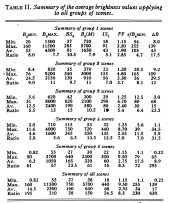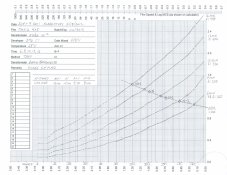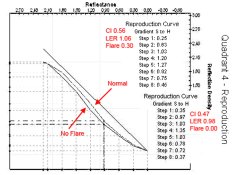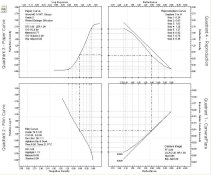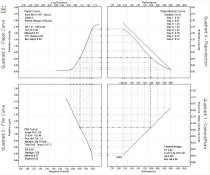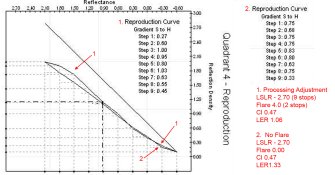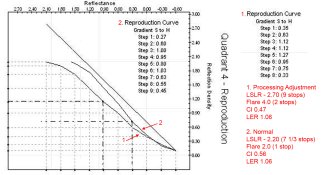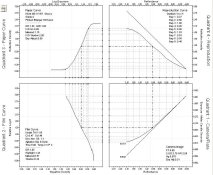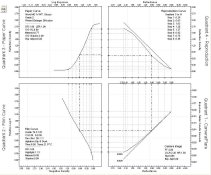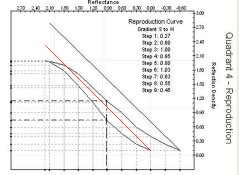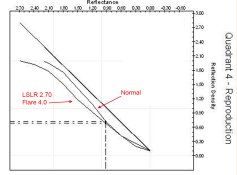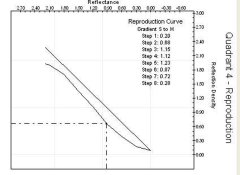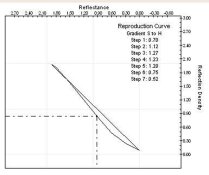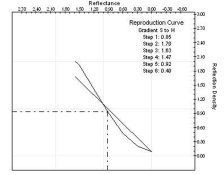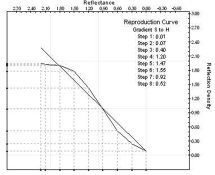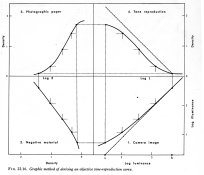Michael, I'll try to touch on some of these questions.
When I do these white card tests I meter with the same 1deg spot meter I use in the field, keeping as close to the lens axis as possible. I don't know if there is any flare in the metering, or the camera exposures. Based on previous responses from you and Bill Burk to similar questions, I assume flare to be minimal in my tests.
Yes, I would considered it virtually flare free.
I use a brightly lit white card and expose in camera to determine EI (admitedly this probably ends up understating EI, and that is borne out when I go to the "outside the lab" tests).
It's not as much about the white card as it is about interpreting the results from a flare free test. Remember the thread about the relationship between the speed point and the metered exposure point? The reason why the ISO speed point is only 1.0 logs from the metered exposure point while the scene luminance range between the metered exposure and the shadows is 1.3 log is because you are projecting the effective shooting conditions onto a no flare test. Flare reduces the range from 1.3 to 1.0 or to put it another way, flare increases the film speed from where it would be without it. The higher the flare factor, the faster the effective film speed.
2. I plot a curve from threshold up to zone XV, the reason being I'm often dealing with very long SBRs in my work. This is why I feel it is important to know the shape of the curve, all the way up to zones XIV-XV under different development scenarios - not understanding that part of the curve and how variable it is, is where many people go wrong with severe contractions, stand development etc.
However I am still unclear on things like - what constitutes a high flare vs low flare situation?
It's more likely from your experience, you know more about flare in extreme situation than almost anyone else. Many of the more normal conditions likely to be experienced tend to fall into predictable rules and categories of scene types and lighting conditions. Most of which I am rusty on. There are a few papers by Loyd Jones that cover much of this in detail. All three of them were published in The Journal of the Optical Society of America. They are listed chronologically and they are:
The Brightness Scale of Exterior Scenes and the Computation of Correct Photographic Exposure.
Sunlight and Skylight as Determinants of Photographic Exposure. I. Luminous Density as Determined by Solar Altitude and Atmospheric Conditions.
Sunlight and Skylight as Determinants of Photographic Exposure. II. Scene Structure, Directional Index, Photographic Efficiency of Daylight, Safety Factors, and Evaluation of Camera Exposure.
The first and third paper deal more directly about what you are interested in. They are a tough read. I probably should review them too. If I run across anything I think will be helpful, I'll post it.
On the average, the shorter the luminance range the lower the flare factor and vice versa. Flare tends to act like a buffer with the degree of processing. You don't have to reduce development as much with scenes with a large luminance range and you don't have to extend the processing as much with scenes with shorter luminance ranges than would be indicated without factoring in flare. Then there's the whole perception of the finished image. If the shot is toward the sun, the viewer will expect for the shadowed areas to be hazy. I believe the third Jones paper covers much of this.
Michael, This is a really big subject. Maybe if the questions are a little bit more specific or something, I could be more specific with my answers.
To me the last graph you posted (post #131) is really what it all comes down to when we talk about flare. This is really the kind of "flare overlay" we all need when we plot curves. The question is, how? It is too variable.
That graph isn't really how flare works on the film curve, below is how it really works.
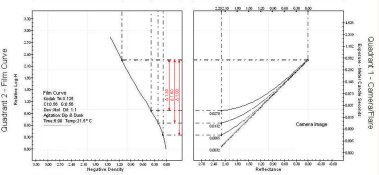
Now, you don't need a camera image / flare curve to make it work. Simply use the exposure range from combination of the scene's luminance range and flare and apply it to the film curve. It sounds like you are already doing this.
Is flare too variable to have to do this? Yes and no. Yes, no matter what it's always going to be a guesstimate. No in that phenomenon tends to have statistical averages and follow a bell curve, so you have a better chance to be within your target range if you factor some of it in.
Odds are you are already factoring it in depending on how you measure the film. This is something I've discussed ad infinitum. The manufacturer's published processing times have flare factored in too. So most people incorporate flare into their film processing whether they know it or not. And if you are already incorporating a stop of flare into your process, and if the flare factor is plus or minus another stop or so, this difference can easily be off-set by a variety of factors like scene luminance range, the nature of the subject, how the tones are distributed, choice of paper grade, and personal taste.
Didn't I recently say something about why Kodak might use a fix flare model for their contrast determination instead of the more realistic variable flare model? The question comes down to how accurate does a model have to be. Understanding theory is not only about attempting to achieve a level of control over the process. It's about understanding the process in order to know the degree of what can and cannot be controlled.
And how is that flare impacted by the choice of lens, luminance placements, exposure time etc?
Another question that could be the topic for a whole new thread. Off the top of my head - Lens? Angle of view, coated or uncoated, size of image circle, number of elements, etc. Distribution and size of scene luminance? Absolutely, much of first and third Jones paper is on that topic. Exposure time? I'm not sure but it doesn't seem like it should. I'll have to keep an eye out for that one.
Sorry if this post comes off as disjointed and rambling.



